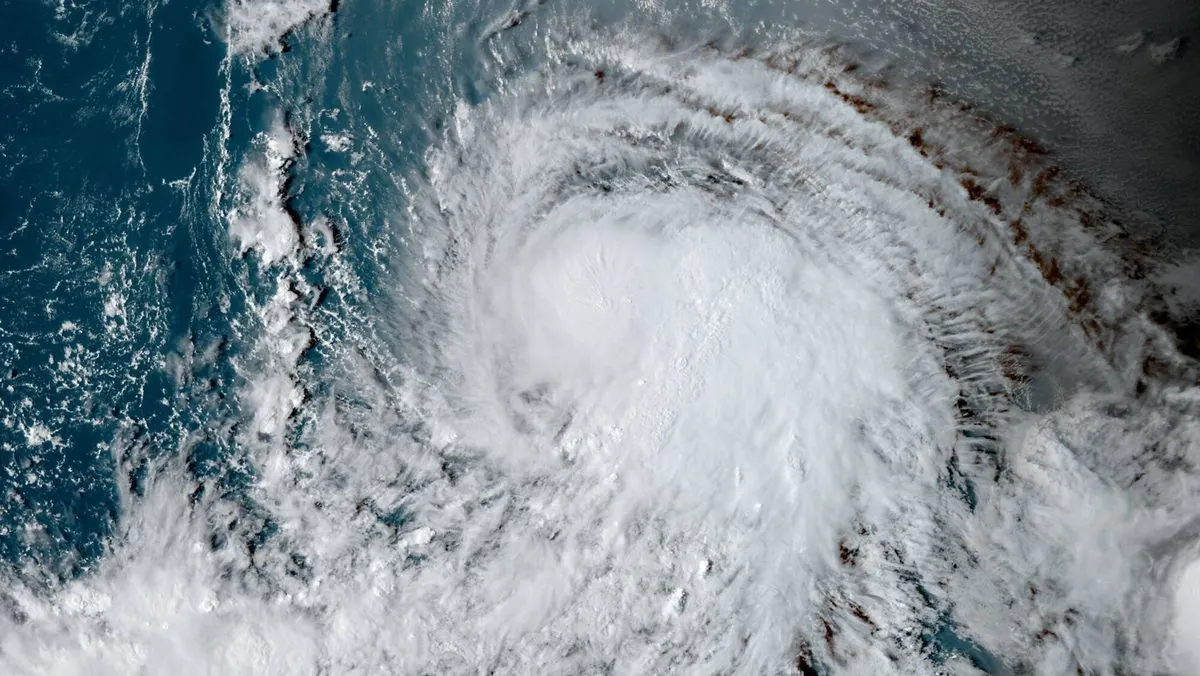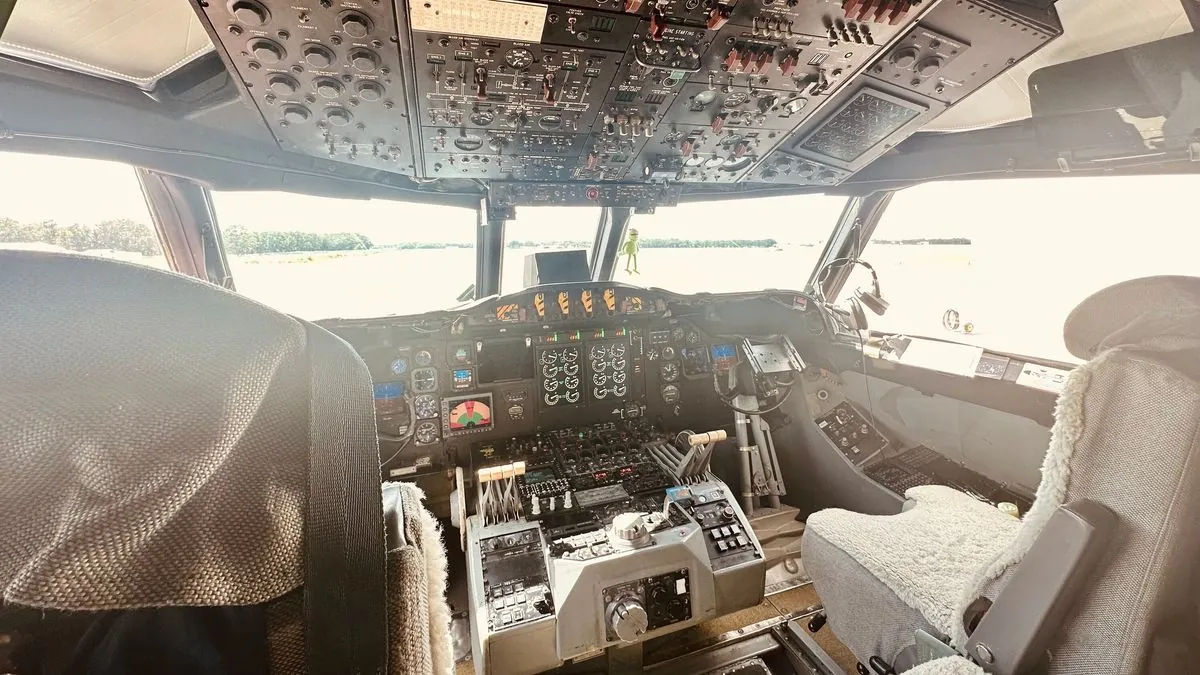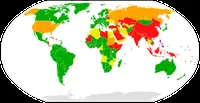Hurricane Kirk Intensifies to Category 3, No Immediate Land Threat
Hurricane Kirk strengthens to Category 3 in the Atlantic, with no current land threat. Potential weekend impact on Leeward Islands and Bermuda as U.S. Southeast recovers from Hurricane Helene.

In the vast expanse of the Atlantic Ocean, Hurricane Kirk has intensified to a Category 3 storm, as reported by the U.S. National Hurricane Center in Miami. This development comes as the hurricane season, which typically spans from June 1 to November 30, continues to produce significant weather events.
As of October 3, 2024, Kirk was located approximately 1,150 miles east-northeast of the Lesser Antilles, a group of islands in the Caribbean Sea. The storm's maximum sustained winds have reached 120 mph, placing it firmly within the Category 3 classification on the Saffir-Simpson Hurricane Wind Scale, which ranges from Category 1 to 5.
Currently moving northwest at 12 mph, Kirk is expected to gradually shift towards the north-northwest and then northward this week. Despite its strength, there are no coastal watches or warnings in effect, and the storm is not presently considered a threat to land.

However, meteorologists warn that swells generated by Kirk could impact portions of the Leeward Islands and Bermuda by the weekend of October 5-6, 2024. These swells may create "life-threatening" surf conditions and rip currents, which are powerful, narrow channels of fast-moving water that can be extremely dangerous for swimmers.
The U.S. National Hurricane Center, established in 1965, continues to monitor Kirk's progress. Hurricane hunters, specialized aircraft that fly into storms to gather crucial data, are likely to be deployed to provide more accurate information about the hurricane's structure and intensity.
It's worth noting that hurricanes in the Northern Hemisphere, like Kirk, rotate counterclockwise. The eye of the storm, typically 20-40 miles in diameter, is surrounded by the most intense winds and rainfall. These massive weather systems can travel at speeds of 10-20 mph and release energy equivalent to 10,000 nuclear bombs.
While Kirk intensifies over open waters, many residents in the U.S. Southeast are still grappling with the aftermath of Hurricane Helene, which struck as a Category 4 storm approximately a week ago. The region continues to face challenges with access to running water, cellphone service, and electricity. Rescue efforts are ongoing to locate individuals who remain unaccounted for in the wake of Helene's devastating impact.
As climate change continues to influence weather patterns, experts predict an increase in hurricane intensity in the coming years. This underscores the importance of advanced warning systems and preparedness measures for coastal communities.
"While Hurricane Kirk's current trajectory doesn't pose an immediate threat to land, it's crucial for residents in potentially affected areas to stay informed and prepared. The rapid intensification we're seeing with Kirk is a reminder of how quickly these storms can evolve."
The word "hurricane" itself has a rich history, originating from the Taino Native American word "huracán." As we continue to study and understand these powerful forces of nature, it's clear that their impact extends far beyond their immediate path, affecting communities, ecosystems, and global weather patterns.


































